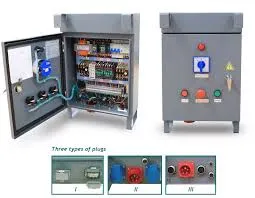Understanding Floor Warning Tape A Vital Tool for Safety
In various industries, safety is of paramount importance, and one of the simplest yet most effective tools to ensure this is floor warning tape. Often overlooked, this tape plays a crucial role in maintaining a safe working environment, especially in settings that involve heavy machinery, foot traffic, or hazardous materials. In this article, we will delve into the significance of floor warning tape, its applications, types, and best practices for usage.
What is Floor Warning Tape?
Floor warning tape is a brightly colored adhesive tape that is used to mark safe pathways, hazardous areas, and other important indicators on the floor. It is designed to catch attention and communicate important information to employees and visitors quickly. Floor warning tape can come in different colors, patterns, and materials, each serving a unique purpose, whether it's to alert personnel to dangerous areas or guide them towards safe routes.
The Importance of Floor Warning Tape
The importance of floor warning tape cannot be overstated. In workplaces like factories, warehouses, and hospitals, accident prevention is critical. This tape helps in several ways
1. Enhancing Visibility The bright colors of warning tape are designed to stand out against the often-dull flooring of industrial settings. This increased visibility helps in alerting employees to potential hazards, ensuring that they are aware of their surroundings.
2. Communication of Hazards Different colors and patterns can denote various hazards. For instance, red tape might indicate danger or a no-entry zone, while yellow tape warns of caution. This system of color coding is crucial for quick understanding and reaction in emergencies.
3. Guiding Traffic In environments where foot and vehicular traffic is high, floor warning tape can help direct movement patterns, indicating safe walkways and driving paths. This minimizes the risk of collisions and accidents.
4. Compliance and Legal Safety Many industries are required to follow safety regulations that include the marking of hazardous areas. Using floor warning tape can help organizations comply with these regulations and avoid legal complications from accidents.
Types of Floor Warning Tape
There are several types of floor warning tape available, each tailored for specific needs
- Standard Warning Tape Typically available in red, yellow, and other striking colors, standard warning tape is used for general hazard marking.
floor warning tape

- Glow-in-the-Dark Tape This type of tape is ideal for emergency exits or areas where visibility may be compromised in low-light situations.
- Anti-Slip Tape Aside from marking areas, this type of tape also provides a textured surface that helps prevent slips and falls, making it perfect for outdoor use or wet environments.
- Floor Marking Tape This tape is wider and more durable, suitable for creating solid lines in warehouses or factories to define work zones and aisles.
Best Practices for Using Floor Warning Tape
To maximize the effectiveness of floor warning tape, consider the following best practices
1. Choose the Right Tape Select the type of tape that best fits your environment and purpose. Consider factors like the type of flooring, expected foot traffic, and specific hazards present.
2. Proper Installation Ensure that the surface is clean and dry before applying the tape. This will enhance adhesion and longevity. Follow manufacturer instructions for application to avoid any pitfalls.
3. Regular Inspections Periodically check the condition of the tape. Replace any worn or damaged sections to maintain safety standards.
4. Employee Training Educate employees on the meanings of various tape colors and patterns. Regular training can reinforce the importance of adhering to safety protocols.
5. Use Alongside Other Safety Measures Floor warning tape should complement other safety measures such as signage, guards, and personal protective equipment (PPE) to create a holistic safety environment.
Conclusion
In conclusion, floor warning tape may seem like a simple object, but its role in workplace safety is critical. By enhancing visibility, communicating hazards, guiding traffic, and ensuring compliance with safety regulations, it contributes significantly to the prevention of accidents and injuries. Recognizing its importance and implementing best practices can lead to a safer work environment for everyone involved. Whether you are managing a factory, a hospital, or a retail store, investing in quality floor warning tape should be a priority in your safety strategy.
-
Versatility with Tape Electrical InsulationNewsJun.09,2025
-
Floor Marking Tapes For WareHouseNewsJun.09,2025
-
Enhance Your Projects with PVC Electrical TapesNewsJun.09,2025
-
Enhance Your Projects with Automotive Wiring Harness TapeNewsJun.09,2025
-
Enhance Your Automotive Fabric TapesNewsJun.09,2025
-
Enhance Electrical Projects with Cambric TapeNewsJun.09,2025
